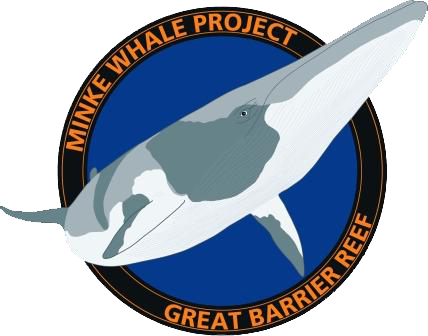Social & Economic Values
Social and economic values
Improving our understanding of the social, ecological and economic values of wildlife is an important precursor to their sustainable use and management. Defining such values from the perspective of all stakeholders provides a basis for determining limits of development (e.g. in setting Limits of Acceptable Change) to uphold these values.
Humans benefit physiologically and psychologically from interactions with nature and wildlife and attribute a range of values to wildlife species. In wildlife tourism, conducting research to understand people’s perceptions and values of wildlife and their interaction experiences has been recognised as a critical step towards sustainable management.
Research on social values of dwarf minke whales
Visitor studies
The MWP research team has conducted passenger surveys on swim-with-whales (SWW) vessels each minke whale season since 1996, which have contributed to evaluations of management guidelines, interpretation, and social and economic values of the whales and the SWW activity.
Valentine, Birtles, Curnock, Arnold & Dunstan (2004) documented exceptionally high satisfaction ratings among SWW participants in comparison with other wildlife tourism worldwide. They showed a correlation between visitor satisfaction and closeness of approaches by the whales, total number of whales seen, and the total time spent with whales.
A PhD study by Curnock (2010) included an investigation of the elements that contribute to the swimming-with-dwarf minke whales experience using passenger questionnaires (n=2,171), and identified a range of social values of the whales and the SWW experience held by the tourists and key stakeholders. Defining elements of the SWW experience that emerged included: (i) closeness to whales, (ii) the in-water setting, (iii) seeing many/multiple whales, (iv) the long duration of interactions, (v) inquisitive behaviour displayed by the whales, (vi) interactions occurring on the whales’ terms, (vi) the whales’ aesthetic appeal and physical attributes, and (viii) a perception that the SWW encounters were well managed. Significant differences however in passengers’ experiences were found on different vessels. Passengers on live-aboard vessels were more likely to experience swimming-with-whales, saw more whales, got closer to them and gave higher ratings of satisfaction.
Stakeholders’ values
Curnock (2010) investigated social values associated with the whales and the SWW activity using interviews with 16 stakeholder key informants, including industry personnel, Reef managers, NGO representatives and researchers. Industry respondents identified dwarf minke whales as one of the top wildlife experiences offered by their company. Management agency representatives perceived the SWW activity to be a good opportunity for engaging with the tourism industry and wider public, and for promoting the sustainable management of whale watching and the Great Barrier Reef. Other stakeholders identified the SWW activity as an opportunity to raise public awareness for whale conservation and expressed a keen interest in the ongoing evaluation and sustainable management of the SWW activity.
Research on economic values of dwarf minke whales
Research by the MWP in collaboration with Professor Natalie Stoeckl (James Cook University) over 2007-2010 investigated the social and economic values of a range of iconic marine wildlife species in the Great Barrier Reef, including dwarf minke whales. Stoeckl et al. (2010) found that each year the five live-aboard dive-vessels that utilise the Ribbon Reef region (four of which hold SWW-endorsements) contribute between $16.1 and $27.6 million (depending on the regional multiplier used) to the regional economy. During the months of June and July, a substantial proportion of these vessels’ regional economic contribution can therefore be attributed directly to their encounters with dwarf minke whales and this is the subject of follow-up studies investigating the relative proportions that are attributable to individual marine species.

For further information on this research, please see our report on the RRRC website.
